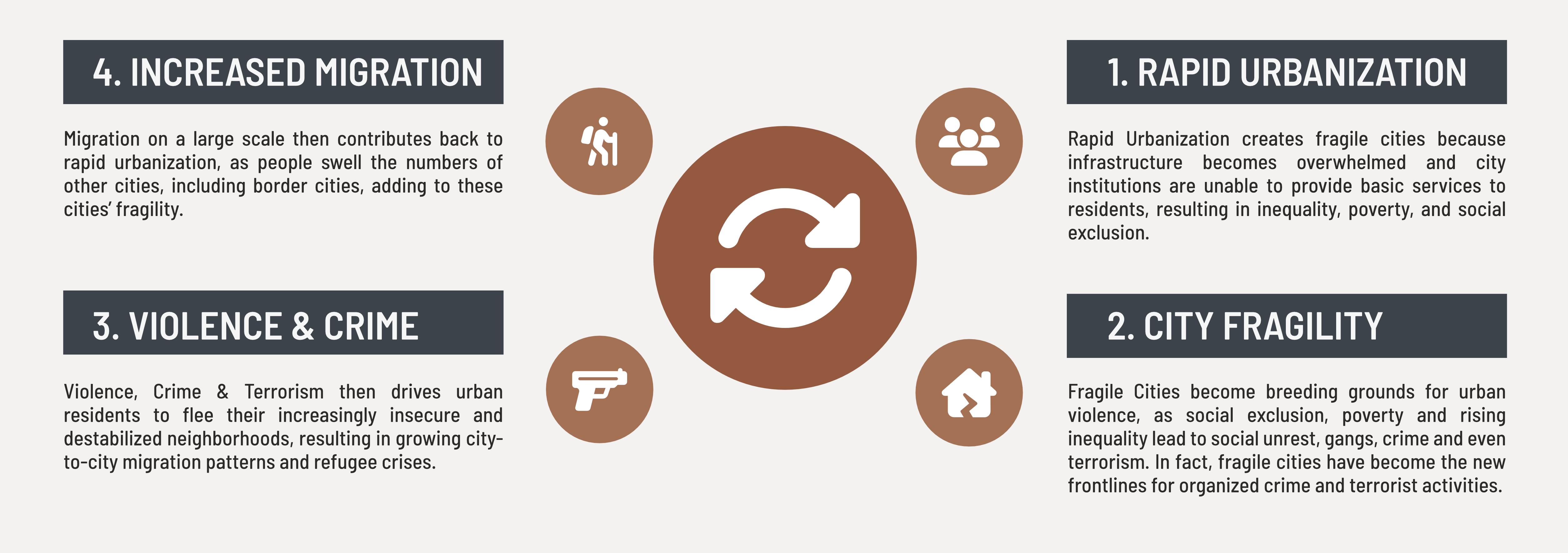WHY IT MATTERS:
LATIN AMERICA’S URBAN AND MIGRATION CHALLENGE
Latin America is filled with some of the most industrious, capable, and hard-working people looking for opportunities to thrive and create viable futures for themselves and their families. Unfortunately, over 200 million Latin Americans still do not have enough income to meet their basic needs. 162 million live in fragile, poor, low-income urban communities. 42 of the 50 most violent cities in the world are located in Latin America. This has forced 43 million to migrate. We’re on a mission to change that reality.
Today's Reality
Latin America is the World’s most Urbanized Region
- From 1950 to 2020, urban population grew from 30% to over 82%. It is predicted to reach 90% by 2050.
- Theres are 55+ cities with populations over one million.
Cities are Struggling
- Cities struggle to accommodate migrants and growth, resulting in massive infrastructure gaps.
- 25% of the population (162 million people) live in fragile, low-income communities.
Inadequate Planning and Services
- Major gaps exist in basic services (water, sanitation, emergency services).
- 82 million are without access to basic sanitation services, and only 28% of wastewater is treated.
Effects of Hyper-Urbanization
- Urban development often excludes fragile communities.
- Violence, especially against women and girls, is on the rise. 63 of 100 children suffer from domestic violence and 87 million youth are poor, keeping many from completing their education.
Corruption and Weak Institutions
- Many cities experience widespread corruption and ineffective municipal governance.
- Poorer municipalities frequently suffer from higher levels of corruption.
Widespread Crime, Violence, and Migration
- 42 of the 50 most violent cities in the world are located in Latin America, notably in Brazil, Venezuela, Colombia, Central America, and Mexico.
- Rise in crime, violence, political instability, and post-pandemic challenges have forced 43 million to migrate, particularly towards the United States, as people seek safety and economic opportunities.
Church’s Limited Role in Community Transformation
- There is a notable gap in integrating the love of God and the principles of the Great Commission with the love of neighbor and the Great Commandment.
- Most churches prioritize internal growth, often not engaging in community transformation.
Many NGOs will not Effectuate Lasting Change
- Many NGOs provide temporary aid but lack long-term impact and capacity for large-scale transformation, often adopting a “deficiency approach” where the poor are seen mainly as beneficiaries needing external assistance.
- Competitive dynamics, resource scarcity, political interference, and an inability to form effective coalitions often limit NGOs’ capacity to organize as a strong force for comprehensive urban development.

